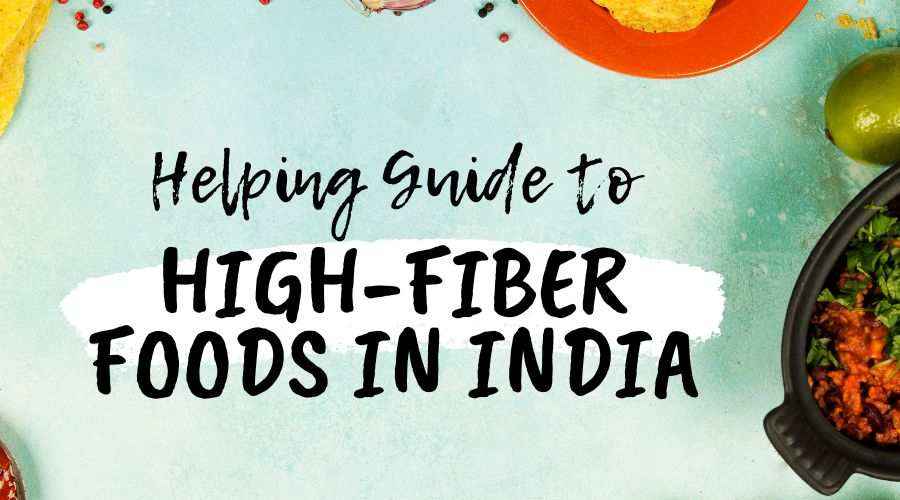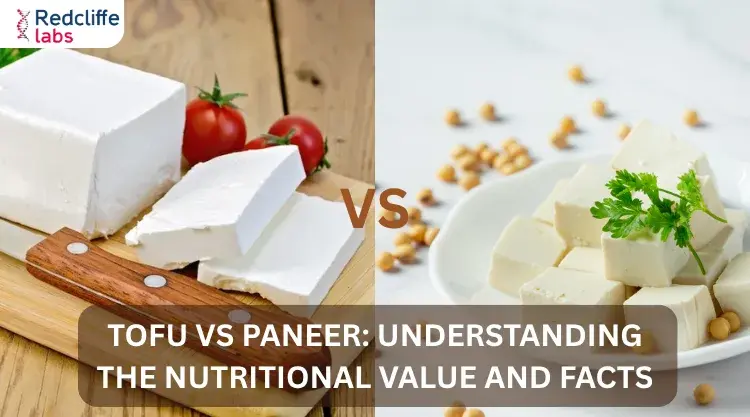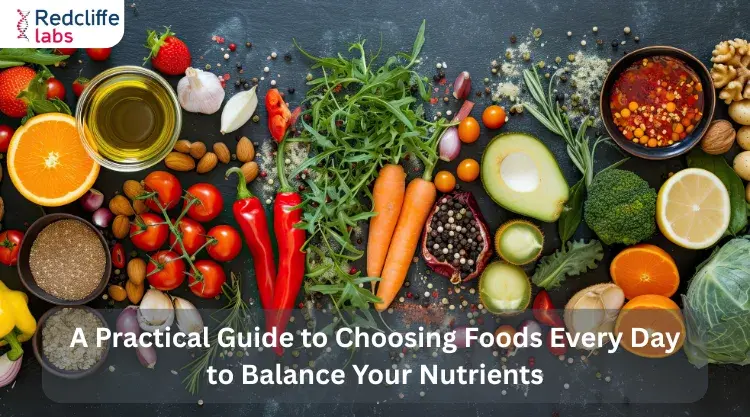Helping Guide to High-Fiber Foods in India

Medically Reviewed By
Prof. Ashok Rattan
Written By Sheena Mehta
on Nov 6, 2024
Last Edit Made By Sheena Mehta
on Jul 19, 2025

Today’s blog is a helping guide to high-fiber foods in India. It includes everything you need to know, from the importance of dietary fiber foods to their contribution to health, side effects, and more.
What is dietary fiber?
Dietary fiber/fiber contributes to our body. Unlike fats, carbohydrates, or proteins, fiber passes relatively intact through your stomach, colon, and small intestine. Its primary function is maintaining digestion, heart health, and blood sugar levels.
Two main types of fiber:
Soluble fiber and insoluble fiber are two main types of fiber. Let’s discover them in detail.
- Soluble fiber forms a gel-like substance in the gut. It helps bind to toxins, fats, and cholesterol. Foods such as oats, barley, apples, flaxseed, and oranges are high in soluble fiber and can help lower cholesterol and blood sugar levels.
- Insoluble fiber promotes regular bowel movements and supports flushing out waste and toxins. Foods such as whole grains, nuts, seeds, carrots, and cucumbers prevent constipation and intestinal blockages and may also reduce the risk of colorectal cancer.
India and High-Fiber Foods
India has a comprehensive variety of high-fiber foods integral to traditional diets and offers immense health benefits.
Listed below are the most common high-fiber foods in India. Have a look!
- Whole grains such as millets such as jowar, bajra, and ragi. Others include brown rice, oats, and whole wheat.
- Legumes and pulses include masoor, moong, toor, and urad. Others include chickpeas (chana), black beans, and kidney beans (rajma).
- Fruits such as guava, bananas, pomegranate, apples, and pears.
- Vegetables such as spinach (palak), carrots, pumpkin (kaddu), and okra (bhindi).
- Nuts and Seeds include almonds and walnuts, chia seeds, and flaxseeds.
- High-fiber snacks such as roasted chana, popcorn, and dhokla
7 Key Reasons Why High-fiber Foods Are Important?
Consuming high-fiber foods can help improve your digestion, heart health, and overall well-being.
1. Supports digestive health
High-fiber foods support digestive health. They promote regular bowel movements, decrease the chance of constipation, and reduce the risk of various digestive disorders. Insoluble fiber aids in building bulk in the stool, making it easier to pass. Thus, it not only helps maintain regularity but also prevents hemorrhoids.
2. Helps maintain a healthy weight
Fruits, vegetables, grains, and lentils are fiber-rich foods that make you feel full for longer. Thus, they reduce overall calorie intake and support weight loss. Soluble fiber promotes regular bowel movements, which helps you feel fuller and relieve constipation. This may also lower your cholesterol and stabilize your blood sugar levels.
3. Regulates blood sugar levels
Soluble fiber tends to slow the absorption of carbs in the body, which prevents blood sugar spikes and is thus beneficial for people with diabetes. Besides, high-fiber foods also have lower insulin resistance, which decreases the risk of type 2 diabetes.
4. Supports heart health
High-fiber foods do wonders for your health, not just by helping in digestion, maintaining a healthy weight, and regulating blood sugar levels. They also support heart health. Oats, apples, beans, legumes, berries, and other foods help manage cholesterol levels, maintain healthy blood pressure, and control blood sugar.
5. Aids in detoxification
High-fiber foods flush out toxins from your body through your stool. Add beans, whole wheat, oats, fruits and vegetables, nuts, and seeds to your diet for regular bowel movements. Additionally, they allow harmful compounds to stay for a short time in your intestinal tract.
6. May lower cancer risk
Incorporating high-fiber foods into your diet can help lower the risk of certain cancers, such as colorectal cancer. High-fiber foods such as brown rice, barley, quinoa, apples, chia seeds, etc., support regular bowel movements, reducing the time carcinogens remain in the intestines. Besides, they act as prebiotics and thus feed the beneficial bacteria in the gut.
7. Boost longevity
High-fiber foods can support long-term health. Whole grains, legumes, berries, avocados, vegetables, nuts, and seeds can reduce the risk of age-related health issues and ultimately contribute to longevity.
6 Best Fiber-Rich Foods and Their Contribution to Health
Remember, health is wealth. Incorporate high-fiber foods into your diet to maintain overall health due to their numerous benefits. Below are some of the ultimate high-fiber foods in India that contribute immensely to health.
|
Examples of High-fiber foods |
Key Benefits | |
|
1. Whole Grains such as oats, brown rice, whole wheat bread, quinoa, and millet. |
High-fiber foods promote digestive health, lower cholesterol levels, and reduce the risk of heart disease. |
They also help lower blood sugar levels. |
|
2. Legumes and pulses such as lentils, chickpeas, black beans, and kidney beans. |
Legumes and pulses are plant-based protein sources. They support muscle health and weight management. |
They also help control appetite and reduce overall calorie intake. |
|
3. Fruits such as apples, bananas, berries, guava, and pears |
Fruits contain vitamins and antioxidants, which help support overall health and immune function. |
.They also keep your body hydrated. Additionally, both soluble and insoluble fiber are good for digestive health. |
|
4. Vegetables include broccoli, carrots, spinach, sweet potatoes, and kale. |
High-fiber vegetables like these are generally low in calories. This makes them ideal for losing weight. |
Vegetables are loaded with essential nutrients and phytochemicals, which help reduce inflammation and may lower the risk of chronic diseases. |
|
5. Nuts and seeds include almonds, walnuts, chia, flaxseeds, and pumpkin seeds. |
Nuts and seeds contain fiber and healthy fat content that help stabilize blood sugar levels. |
They also contain healthy fats, fiber, and protein, contributing to heart health. |
|
6. Fiber-rich snacks include unsweetened popcorn, roasted chickpeas, and whole-grain crackers. |
Fiber-rich snacks are satiating, which can curb hunger between meals and thus help manage weight. |
They also prevent rapid blood sugar spikes and help maintain a healthy digestive system. |
Also read:
https://redcliffelabs.com/myhealth/food-and-nutrition/25-healthy-high-fiber-snacks-for-weight-loss/
How much fiber does each age group need?
Below is a table showing the age-wise recommended intake of fiber:
| Age | Recommended Intake of Fiber |
| For children aged 1-3 years | Approx.19 grams |
| For children aged 4-8 years | Approx. 25 grams |
| For boys aged 9-13 years | Approx. 31 grams |
| For girls aged 9-13 years | Approx. 26 grams |
| For boys aged 14-28 years | Approx. 38 grams |
| For girls aged 14-28 years | Approx. 26 grams |
Side Effects of High-Fiber Foods
High-fiber foods are generally safe and thus beneficial to health. Excessive consumption can cause adverse side effects such as bloating, gas, abdominal discomfort, diarrhea, constipation, interference with the absorption of certain minerals, and gastrointestinal distress.
Remember, moderation is key to avoiding these side effects and encouraging overall health and well-being.
5 Helping tips to reduce side effects associated with high-fiber foods:
- Drink plenty of water to allow fiber to do its job in the digestive system.
- Start eating fiber-rich foods, allowing your digestive system to adjust.
- Incorporate a balance of soluble and insoluble fiber in your diet to support digestive health.
- Consult a healthcare provider if you experience gastrointestinal issues such as gas, bloating, or acidity.
- It is important to monitor how your body responds to different high-fiber foods.
Are you getting enough fiber?
Here are some good tips for increasing fiber intake in your body:
- Choose foods that are naturally high in fiber.
- Eat fruits and vegetables without removing their peel or skin when possible.
- Incorporate unrefined grains and cereal products into your diet.
- Instead of juices, choose whole fruits and vegetables.
- Add beans, peas, and lentils when making pasta dishes, casseroles, or stir-fry.
- Eat dried fruits, unsalted nuts, and seeds.
- Begin your day with a whole-grain breakfast.
- Choose brown rice over white rice.
Conclusion
Fiber-rich foods should be part of a balanced diet for maximum health benefits. However, consuming them mindfully for good digestion and to improve overall health and well-being is essential. To begin with, add one or two high-fiber foods to your meals. Allow your body to adjust, and gradually increase your intake.
Additionally, drinking plenty of water promotes proper digestion and hydrates your body.
Frequently Asked Questions
1. What are the benefits of fiber-rich foods?
The benefits of fiber-rich foods include better digestive health, controlled blood sugar levels, reduced risk of chronic diseases, lower cholesterol levels, and improved blood sugar management.
2. Which Indian foods are high in fiber?
Indian foods high in fiber include lentils, bananas, whole grains, nuts, millets, cucumbers, and moringa leaves.
3. What are the signs of low dietary fiber?
The signs and symptoms of low dietary fiber are constipation, feeling hungry soon after eating, high cholesterol, hemorrhoids, constantly feeling tired or sluggish, and difficulty losing weight.
Leave a comment
1 Comments
Abdul Rasheed Mohammed
Mar 15, 2025 at 12:25 AM.
Good information
Myhealth Team
Mar 18, 2025 at 9:37 AM.
Thankyou! We are glad you have liked the information.



